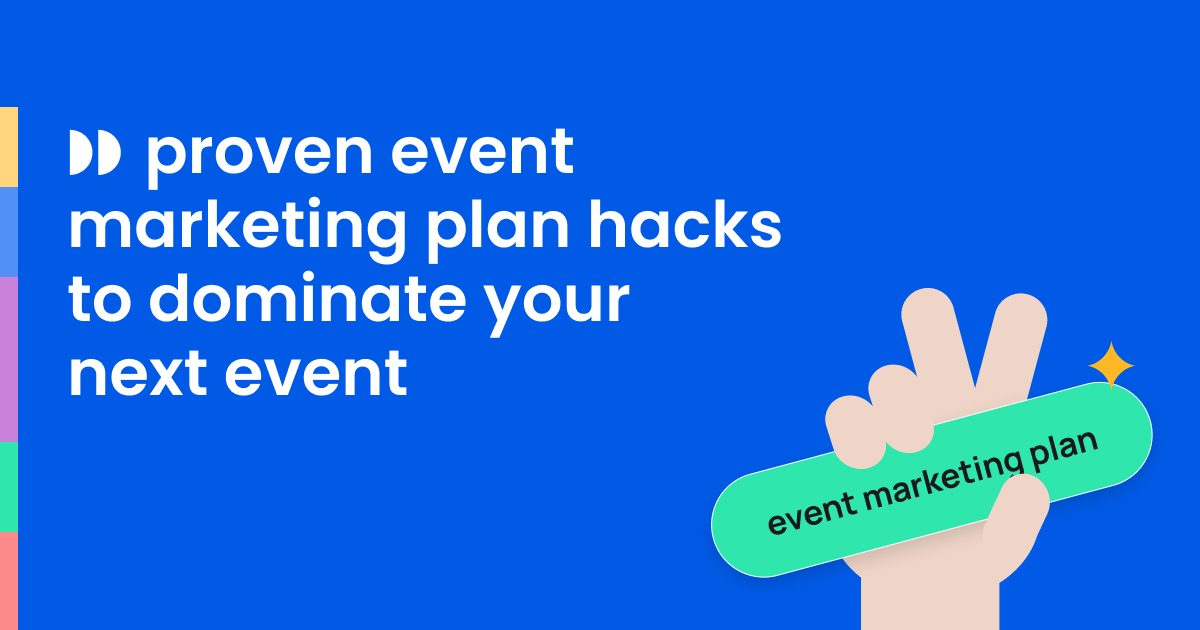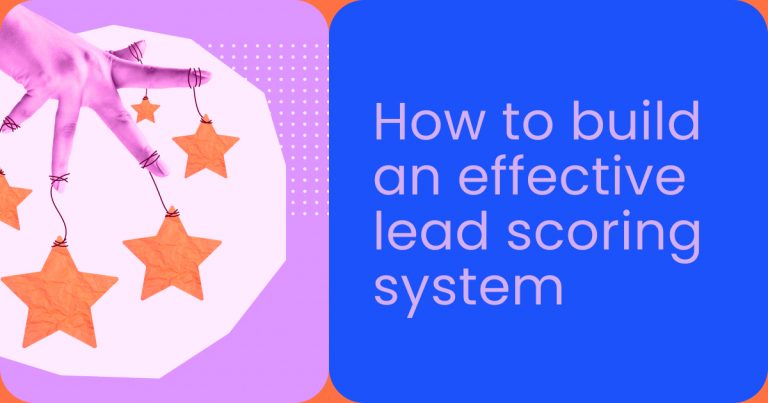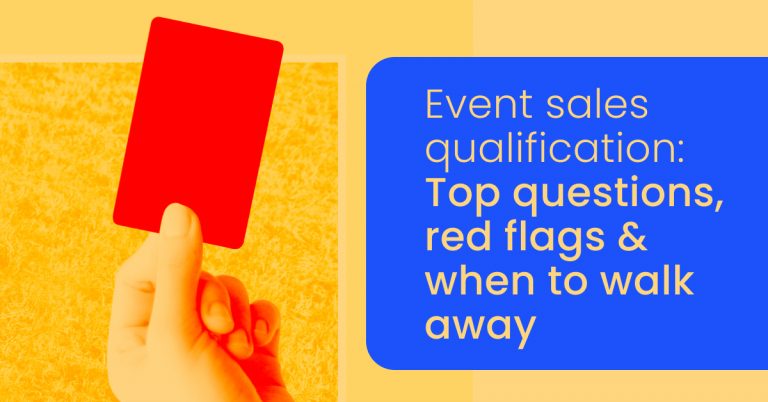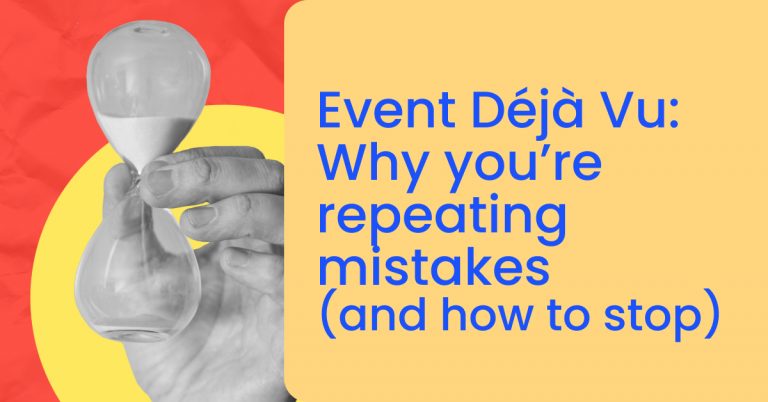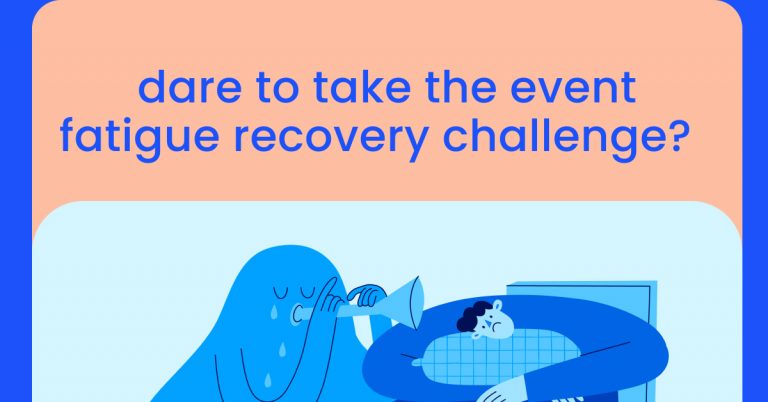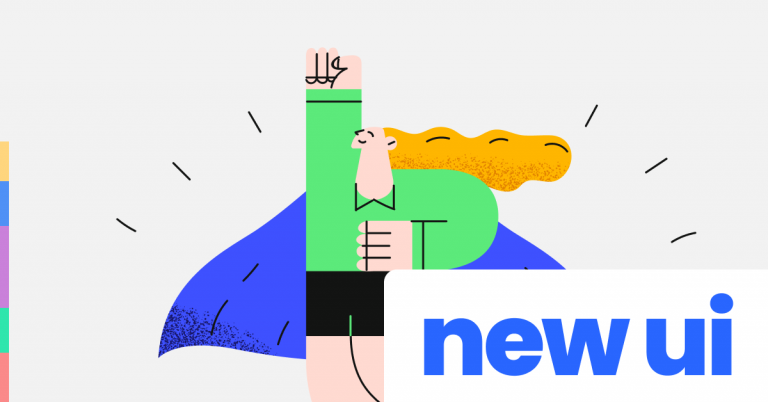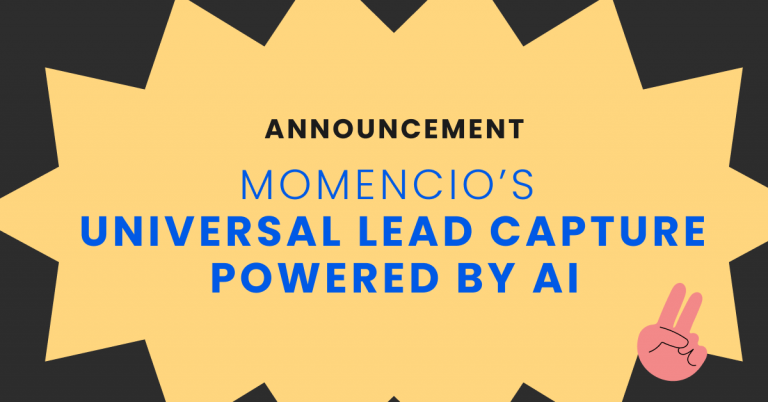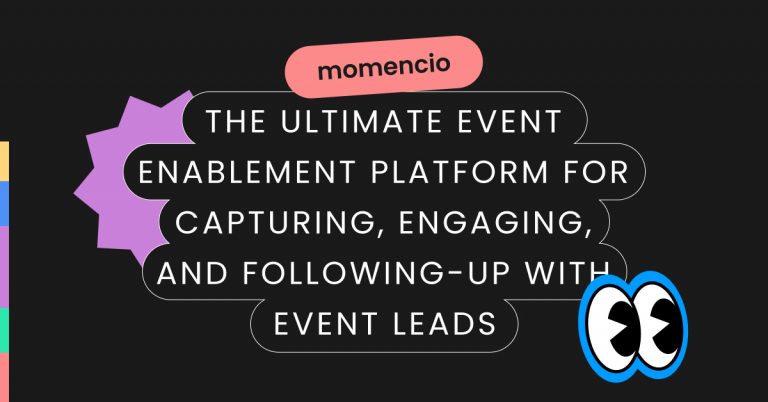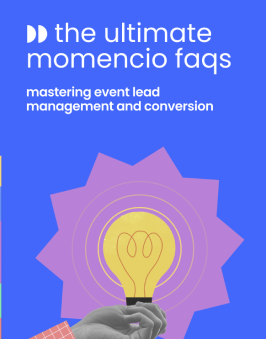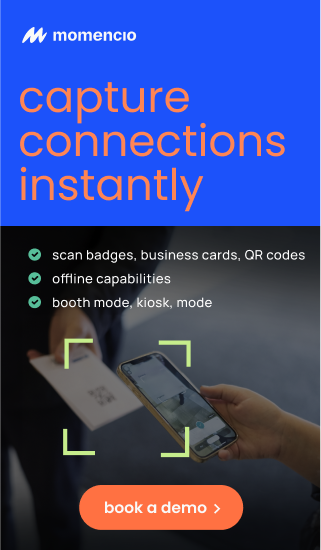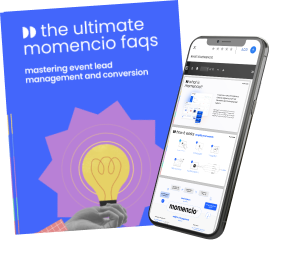The success of any event hinges on a well-crafted event marketing plan. With 87% of marketers relying on events to build relationships with prospects and clients, it’s clear that events are more than just gatherings—they’re opportunities to make lasting connections and drive business growth.
However, planning a high-converting event isn’t just about logistics. It’s about defining clear objectives, engaging attendees meaningfully, and ensuring every lead is nurtured after the event ends. For instance, companies using CRM integrations and automated follow-up tools experience a 27% higher lead conversion rate compared to those relying on manual processes (Salesforce).
This article will guide you through proven strategies for creating an effective event marketing plan—from pre-event promotion to post-event follow-up. You’ll discover actionable tips to enhance attendee engagement, streamline lead capture, and measure your success effectively.
With these insights, you can replicate the strategies of top-performing event marketers and turn your events into ROI powerhouses. Ready to steal these ideas? Let’s dive in!
Define clear goals for your event marketing plan
A successful event marketing plan begins with clearly defined goals. Setting specific, measurable objectives ensures that every aspect of your event—planning, execution, and follow-up—aligns with your organization’s broader business strategy. Without these goals, even the most well-organized event risks falling short of its potential.
The importance of aligning event objectives with business goals
At its core, an event is a strategic investment. Businesses allocate significant resources to trade shows, conferences, and networking events, expecting returns in the form of leads, sales, or brand exposure. But without clear objectives, measuring the return on investment (ROI) becomes nearly impossible.
Action step: Begin by asking, “What does success look like?” For example:
- Are you aiming to generate 100 qualified leads?
- Do you want to achieve a 30% increase in booth traffic compared to your last event?
- Is the primary goal to boost brand awareness in a new market segment?
When objectives are linked to broader business goals, they serve as a North Star for your marketing team, ensuring alignment across pre-event, on-site, and post-event activities.
Examples of measurable KPIs for event success
For a robust event marketing plan, use metrics that go beyond vanity numbers and focus on impact:
- Lead generation: Number of qualified leads captured via badge scanners, digital forms, or interactive tools.
- Attendee engagement: Metrics such as app interactions, booth dwell time, or participation in live polls.
- Social media reach: Impressions, shares, and engagement for event-specific campaigns.
- Sales pipeline impact: Leads converted into sales opportunities or deals.
- ROI: Calculated by comparing total event expenses to revenue generated or anticipated from the event.
Pro Tip: Tools like momencio can help track these metrics in real-time, offering insights into attendee engagement and lead quality.
Create SMART goals
Use the SMART framework to refine your event objectives:
- Specific: “We will capture 200 leads at the conference.”
- Measurable: “Achieve a 50% response rate on post-event surveys.”
- Achievable: “Increase booth traffic by 25% using gamification.”
- Relevant: “Support the sales team by providing 50 highly qualified leads.”
- Time-bound: “Generate 20 meetings with prospects within two weeks post-event.”
Setting SMART goals not only provides clarity but also simplifies post-event analysis.
Incorporating attendee personas into your goals
Understanding your audience is vital for setting relevant goals. For instance, are you targeting:
- Decision-makers like VPs of Marketing or Sales?
- Event planners who need insights into new technologies?
- Vendors or sponsors looking to optimize ROI?
Tailor your goals based on these personas. For example:
- If your audience includes tech-savvy professionals, focus on showcasing innovative tools or integrations.
- For decision-makers, provide data-driven insights into how your product or service boosts ROI.
momencio’s personalized microsites, which deliver targeted content to attendees, are an excellent example of how to address varying personas effectively.
By establishing clear, data-driven objectives, you set the foundation for a high-converting event marketing plan. With your goals in place, the next step is to build a robust pre-event strategy to maximize ROI.
Pre-event strategies to maximize ROI
Imagine this: your event date is locked, your venue is booked, and your team is buzzing with excitement. But without a solid pre-event strategy, that excitement may fall flat. Pre-event planning is where the magic begins—setting the stage for an event that not only attracts attendees but also drives measurable business outcomes.
1. Start with a laser-focused audience profile
Not all attendees are created equal. The more you know about your ideal audience, the better you can tailor your messaging and promotional efforts. Ask yourself:
- Are you targeting decision-makers like VPs of Marketing?
- Is your audience filled with tech-savvy professionals looking for innovative tools?
- Are vendors and sponsors a significant part of your demographic?
Pro tip: Use registration tools or surveys to capture early insights about your audience. Tools like momencio make this seamless by integrating real-time data capture into the registration process, giving you an edge before the event even begins.
2. Make them curious before they commit
In marketing, curiosity is currency. Create intrigue with a teaser campaign that gives just enough information to spark interest.
- Share cryptic social media posts like, “The solution to your biggest sales challenges awaits. Will you be there?”
- Highlight your star speakers with short video clips where they hint at the exclusive insights they’ll share.
Pair this with a dedicated landing page that answers one question: Why should they care? Ensure your CTA stands out—be it an early-bird registration discount or an exclusive content offer.
3. Leverage the power of co-marketing
Why promote your event alone when you can amplify your reach with strategic partners?
- Collaborate with sponsors to share co-branded blog posts. For example: “5 Trends Every Marketer Must Know Before [Your Event Name].”
- Encourage speakers to promote their sessions through their social channels. A speaker’s audience often overlaps with your target attendees, making this a win-win.
Think of it as building an army of advocates. The more voices amplify your event, the bigger the buzz.
4. Turn FOMO into registrations
Create a sense of urgency. Studies show that 60% of people who register for events cite time-sensitive offers as a motivating factor. Use tactics like:
- Countdown timers: Add a visible timer on your landing page with phrases like “3 days left for early-bird pricing.”
- Limited spots alerts: “Only 50 VIP passes remaining!”
People are naturally drawn to exclusivity. Make them feel like they’ll miss out if they don’t act now.
5. Use pre-event content to build trust
Your audience needs to see value before they commit. Share content that positions your event as the solution to their challenges. Here’s how:
- Publish blogs on pain points like “How to Create an Event Marketing Plan That Converts.”
- Host a pre-event webinar featuring your speakers or panelists. Use it as an opportunity to promote the live event.
- Create an “Event Prep Kit” with downloadable checklists or templates to help attendees get the most out of your event.
6. Optimize your outreach timing
Timing can make or break your campaign. Use a strategic rollout plan that unfolds over weeks:
- 12 weeks out: Send save-the-date emails and post the first teaser on social media.
- 8 weeks out: Launch the main campaign, unveiling key speakers and agendas.
- 4 weeks out: Offer discounts or early-bird registrations to drive urgency.
- 1 week out: Send personalized email reminders with clear CTAs, such as “Plan your visit—secure your spot now!”
Creating buzz through storytelling
How often have you seen this tactic being used on LinkedIn and Email marketing?
A company hosting a conference for sales professionals crafts a teaser video featuring their keynote speaker. The speaker starts with, “The strategy that helped me close $5 million in deals last year is just the tip of the iceberg. Join me at [Your Event Name] to learn the rest.”
The teaser goes viral among LinkedIn communities. Attendees sign up, not just because of the speaker, but because of the promise of tangible value. This pre-event hype ensures the event starts with a full house—and high expectations.
7. Don’t forget to track and tweak
The best pre-event strategies are flexible. Use real-time analytics from your marketing channels to monitor campaign performance.
- Is your landing page underperforming? Adjust the headline to better align with attendee pain points.
- Low engagement on social posts? Test different formats, like polls or behind-the-scenes videos.
Platforms like momencio provide real-time tracking and analytics, helping you refine your strategy as the event approaches.
Engaging attendees during the event
Once the doors open, your event marketing plan shifts gears. Attendee engagement is the heartbeat of your event’s success, transforming passive participants into active advocates for your brand. This stage is where connections are forged, data is captured, and experiences are created that attendees will talk about long after the event ends.
1. Make your booth impossible to ignore
Your event booth is more than just a table with brochures—it’s a chance to create a lasting impression. Design it to grab attention and invite interaction.
- Visual appeal: Use bold signage, motion graphics, or even immersive displays like VR experiences to stand out.
- Interactive elements: Incorporate gamification. For example, a quick trivia game related to your product can draw attendees in and give you an opportunity to share key messages. Studies show that gamified booths increase engagement by 50%.
- On-brand giveaways: Offer practical swag like power banks or reusable bottles with your logo. Pair the giveaway with lead capture by requiring participants to provide their contact details.
Pro Tip: Track booth interactions with tools like momencio, which can log attendee interest in real-time, giving your sales team an edge.
2. Use live polling to ignite participation
Don’t let your sessions turn into monologues. Live polling tools can transform passive audiences into active participants. For example:
- During a panel discussion, ask attendees, “What’s your biggest event marketing challenge?” Display the results live to steer the conversation toward audience priorities.
- Offer a small prize for those who engage most actively during Q&A sessions to boost involvement.
When attendees feel heard, they’re more likely to connect with your brand on a deeper level.
3. Personalize interactions on the spot
Generic conversations are a missed opportunity. Equip your team with data about each attendee’s industry or challenges using tools like badge scanners integrated with CRM platforms.
- Train your team to ask thoughtful questions. Instead of “What brings you here?” try, “How does your team currently approach lead capture at events?”
- Tailor your presentations based on attendee responses. For instance, if someone mentions a struggle with post-event follow-up, showcase how your solutions solve that pain point.
momencio’s ability to log attendee-specific notes during interactions ensures follow-up is timely and relevant.
4. Provide value through experiential learning
Gone are the days of passive demos. Today’s attendees want to experience products and solutions firsthand.
- Set up product showcases where attendees can test features themselves. For example, if you offer a lead capture solution, let them scan their own badge to see how it works.
- Host mini-workshops or live tutorials that address attendee pain points. For instance, “3 Steps to a High-Converting Event Marketing Plan” could attract a packed audience while positioning your brand as a thought leader.
Experiences like these are not only memorable but also increase the likelihood of conversion.
5. Create content worth sharing in real-time
Your attendees are your best marketers. Give them reasons to share their experience with their networks.
- Set up Instagram-worthy photo spots with props and branded hashtags. For example, a backdrop with “#EventROIUnlocked” can generate buzz.
- Stream live moments from the event on social media to engage virtual audiences. Showcase speaker highlights, attendee testimonials, or crowd reactions to create FOMO for those not attending.
Pair this with a contest: “Share your favorite event moment using our hashtag for a chance to win a prize.” It’s a simple way to amplify your reach.
6. Keep the focus on lead capture
Engagement is vital, but the ultimate goal is to leave with actionable leads. Make lead capture as seamless as possible:
- Equip your team with tools like momencio’s badge scanners to log attendee details effortlessly.
- Use interactive kiosks where attendees can enter their information in exchange for exclusive content, like whitepapers or guides.
- Segment leads on-site by asking qualifying questions. For example, “Are you currently exploring solutions to streamline event follow-up?”
The more organized your lead capture process, the easier it is to prioritize follow-up after the event.
At a recently concluded tech trade show, one exhibitor drew massive attention with a gamified quiz on event marketing strategies. Attendees scanned their badges to participate, answering five quick questions on screens embedded in their booth. The system ranked participants on a leaderboard, with the top scorer winning a tech gadget. Not only did this drive foot traffic, but it also captured 300+ qualified leads in just two days.
Post-event follow-up tactics that drive results
Think of the post-event follow-up as the final sprint in a race. It’s where your event marketing plan either solidifies its impact or lets potential leads slip through the cracks. Here’s how to ensure your follow-up drives real results:
You’ve just wrapped up a successful event. Your booth was buzzing, your sessions were well-attended, and your team captured dozens (or even hundreds) of leads. But now the hard part begins—turning those connections into conversions.
1. The 48-hour rule: speed is your ally
Don’t let your leads grow cold. The faster you follow up, the more likely you are to keep the momentum alive.
- Action Plan: Send personalized emails within two days. Reference specific conversations or moments from the event to show attendees they’re more than just another name on a list.
- For example: “Hi [Name], it was great chatting about [specific topic] at [Your Event Name]! Here’s the guide we discussed to help you optimize your event marketing plan.”
Think of this step as your digital handshake. You’re reminding them of your conversation while providing value upfront.
2. Personalized microsites: your secret weapon
Post-event, attendees often feel bombarded with generic follow-ups. Stand out by offering a tailored digital experience.
- Create microsites: Build pages with event highlights, speaker sessions, and resources personalized to their interests. If a lead expressed interest in ROI strategies, ensure the page includes tools and articles on this topic.
This added level of personalization reinforces the impression that you understand their unique challenges and positions your brand as a solution provider.
3. Gamify your follow-ups
Make following up an interactive experience. Instead of a standard email, send a fun, engaging activity like:
- A short quiz: “Discover your lead conversion readiness—take our quick 2-minute assessment!”
- An interactive checklist: “5 steps to implement the strategies we shared at [Your Event Name].”
These formats don’t just provide value—they keep your brand top of mind in a memorable way.
4. Segmentation: stop treating all leads equally
Why send the same follow-up to someone who spent 15 minutes at your booth and someone who simply walked by?
- Priority leads: Schedule personalized calls or meetings to discuss specific solutions based on their event engagement.
- Casual attendees: Use nurturing campaigns to gradually build interest with helpful resources.
Use segmentation tools to ensure your follow-ups are meaningful, relevant, and timed to match the prospect’s level of interest.
5. The power of consistent touchpoints
Rome wasn’t built in a day—and neither are most client relationships. Design a follow-up cadence that combines emails, calls, and invitations to future events. Space these interactions out to keep prospects engaged without overwhelming them.
An event lead receives a tailored follow-up email with a link to a microsite full of relevant resources. A week later, they get a quick call to discuss specific challenges they mentioned. Two weeks later, they’re invited to a webinar on optimizing event ROI. This multi-touch approach nurtures trust and keeps your brand at the forefront of their minds.
By varying your outreach tactics and prioritizing leads strategically, you can turn event interactions into high-value business opportunities. Ready to see what happens when you measure and refine your strategy? Let’s move on to the next section!
Measuring success and refining your strategy
Your event is over, the lights are out, and the banners are rolled up. But the work isn’t done. Now comes the most critical part—analyzing results and fine-tuning your strategy to ensure each event is better than the last.
Let’s break it down into manageable steps.
Step 1: Identify your superstar metrics
Start with the data that matters most to your goals.
- If your goal was lead generation, how many qualified leads did you capture?
- If attendee engagement was the focus, how many visitors interacted with your booth, attended your sessions, or participated in live demos?
- And, most importantly, what was the ROI?
Pro Insight: Don’t just measure what happened. Measure why it happened. For instance, if booth traffic spiked during certain hours, analyze whether it was due to timing, promotions, or sheer coincidence.
Step 2: Give your leads a second look
Not all leads are created equal. Look beyond the numbers and dig into the details.
- Hot Leads: Who’s ready for a follow-up meeting or demo right now?
- Warm Leads: Which prospects showed interest but need more nurturing?
- Cold Leads: Who signed up but didn’t engage much?
Segmenting your leads helps you decide where to focus your energy and how to craft tailored follow-up strategies that match their level of interest.
Step 3: Gather unfiltered feedback
Who knows the truth about your event better than the attendees themselves? Collect feedback through surveys or quick post-event polls. Keep your questions straightforward:
- “What did you enjoy most about the event?”
- “What could we improve next time?”
- “Would you recommend attending to a colleague?”
Pro Tip: Review social media chatter. Attendees often share candid opinions online that can give you additional insights into what resonated—or didn’t.
Step 4: Pinpoint what flopped (and fix it)
Every event has its hiccups. Was there a session that had lower attendance than expected? A booth demo that didn’t quite hit the mark? Maybe your social media engagement fell short.
Use these learnings as a guide for your next event. For instance:
- If foot traffic was low, consider repositioning your booth or redesigning it for more visual appeal.
- If a particular type of session underperformed, experiment with a new format, like roundtable discussions or live panels.
Step 5: Make your successes repeatable
What worked well? Celebrate it—and replicate it. If a particular gamification element, presentation style, or giveaway drove engagement, make it a staple of your strategy.
Here’s the golden rule: Success isn’t about luck; it’s about patterns. Identify yours and build on them.
Step 6: ROI isn’t the end—it’s the beginning
Finally, tie your metrics back to your business objectives. If your goal was to convert leads into opportunities, how far did you get? If ROI didn’t meet expectations, assess whether the event aligned with your target audience or whether your execution could improve.
Each insight is a stepping stone, not a dead end. The best event marketers know that refinement is the difference between good results and exponential growth.
Conclusion
Every high-converting event marketing plan boils down to one thing: strategy. From setting clear goals to engaging attendees and mastering post-event follow-ups, the key is to treat each phase as a critical piece of the larger puzzle. Events are more than gatherings—they’re opportunities to build relationships, generate leads, and create lasting value for your brand.
Think back on what you’ve learned. Have you defined goals that align with your business objectives? Did your pre-event promotions capture the right audience? Were your attendees engaged and captivated during the event? Most importantly, did you follow up with purpose and precision? These questions are your compass for refining your approach with each new event.
As you implement these strategies, remember that success isn’t just about execution—it’s about adaptability. Use insights from your events to experiment, improve, and innovate. By continuously refining your event marketing plan, you can turn every interaction into a stepping stone for business growth.
Now, it’s time to take action. If you’re ready to transform your event strategies and optimize ROI, consider tools designed to simplify the process. For instance, momencio offers everything from real-time lead capture to automated follow-ups, ensuring no connection goes to waste.
Book a demo with momencio today and see how you can revolutionize your event outcomes. With the right strategy and tools, your next event could be your most impactful yet.
FAQs
- How do I set measurable goals for my event marketing plan?
- Start by identifying what success looks like for your event. Are you focused on lead generation, brand awareness, or attendee engagement? Use the SMART framework to ensure your goals are specific, measurable, achievable, relevant, and time-bound. For instance, “Capture 150 qualified leads at the trade show” is far more actionable than “Generate more leads.”
- What’s the most effective way to promote an event before it starts?
- Combine personalized email campaigns with targeted social media efforts to maximize reach. Create a landing page that highlights the event’s value and ensures seamless registration. Early-bird discounts, exclusive content teasers, and collaborations with partners or speakers can also help drive attendance.
- How can I engage attendees during the event?
- Engagement starts with creating interactive experiences. Gamification, live polls, Q&A sessions, and hands-on demos are great ways to make attendees feel involved. Equip your team with tools that allow for personalized interactions and efficient lead capture, ensuring that every conversation counts.
- Why is post-event follow-up so important?
- The majority of event value lies in how you nurture leads after the event. Personalized follow-ups, tailored content, and consistent touchpoints ensure that the connections you made turn into long-term relationships or sales opportunities. Neglecting this step can lead to wasted potential.
- What’s the best way to measure ROI from an event?
- Calculate ROI by comparing the revenue or opportunities generated with the total cost of the event. Metrics such as leads captured, booth traffic, attendee feedback, and social media reach should also be factored in to assess the event’s overall success. Tools that provide real-time analytics can make tracking and measuring ROI more efficient.
Interesting facts from research
- Companies that use event-specific tools for lead management report a 27% higher lead conversion rate compared to those using manual methods.
- Gamified booths see up to 50% more engagement than traditional setups, proving that interactivity isn’t just fun—it’s effective.
- Events are responsible for generating 28% of the average company’s marketing pipeline, making them one of the most impactful strategies for lead generation.
- Following up within 48 hours of an event increases the likelihood of conversion by up to 20%, underscoring the importance of timeliness.
- Real-time analytics can improve decision-making during events, leading to a 33% increase in attendee engagement.
